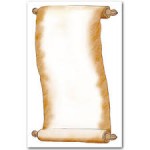Click on a numbered picture region or scroll down the page to find out more…
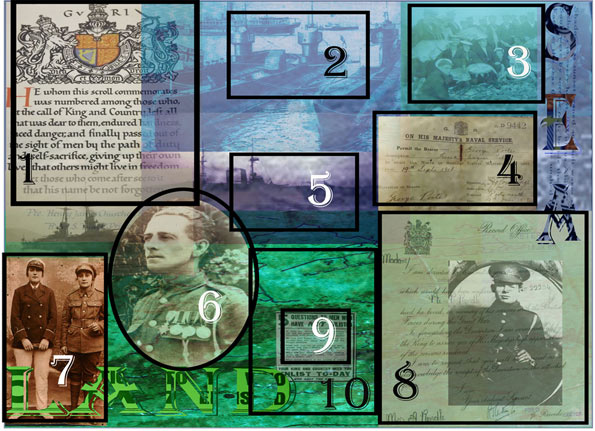
To download a transcript of the audio click the scroll
1. This scroll that was sent to the family of PTE (Private) Henry James Churcher RN who was on The Black Prince. The Black Prince was sunk during the Battle of Jutland in May 1916 with all hands lost.
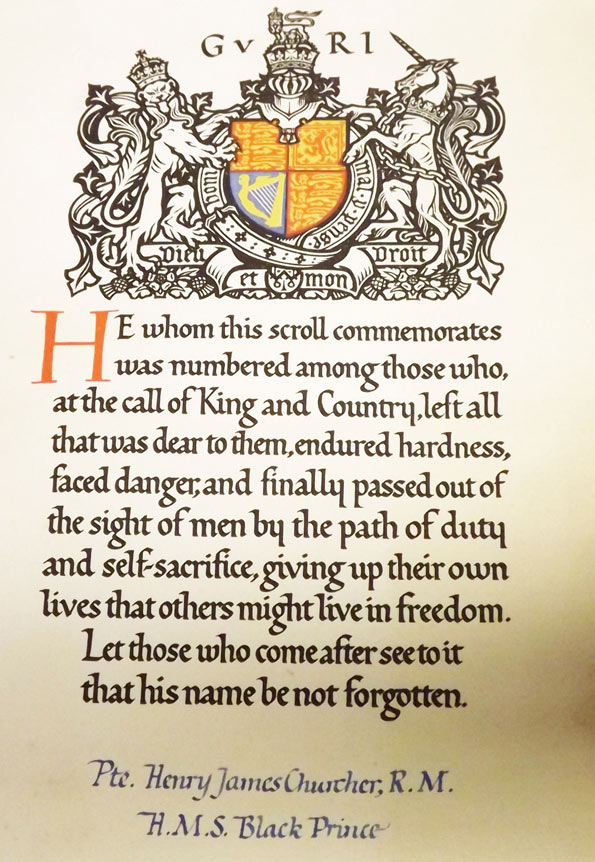
» Back to Top
2. Fort Blockhouse (HMS Dolphin) at Gosport was the home of the Royal Navy Submarine Service and home base for many of the World War One submarine classes from that era i.e D Class, L Class, K Class. The submariners memorial chapel was built in 1917 on the North Bastion to commemorate all the submariners lost in World War One. It is dedicated to Saint Nicholas, the patron saint of sailors. It is also the home of the Book of Remembrance which lists the name of every submariner lost since 1904.
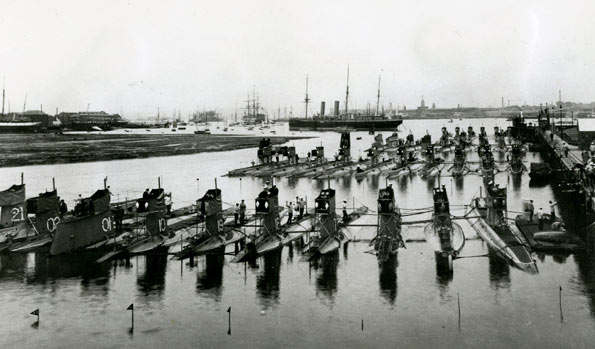
» Back to Top
3. As part of the Search collection this photo taken during the Great War shows 60 men of the HMS Hermione with a large catch of fish.
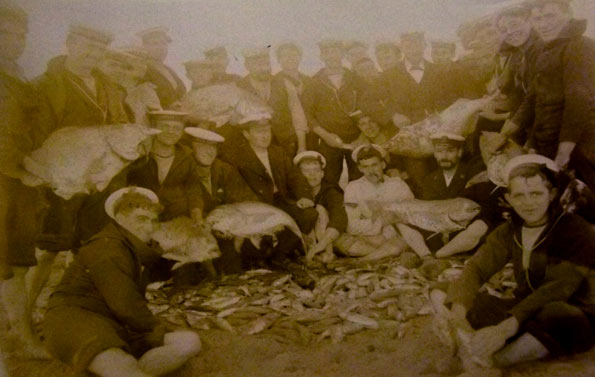
» Back to Top
4. Stored within the archives are some pictures of ships that were involved in World War One. There were many Sea battles as part of the overall campaign. One of the most famous was the Battle of Jutland in which more than 6000 sailors went down with their ships. The majority of which were from Gosport and Portsmouth. During the war, there were very few families in Gosport who were not affected by the loss of a loved one.
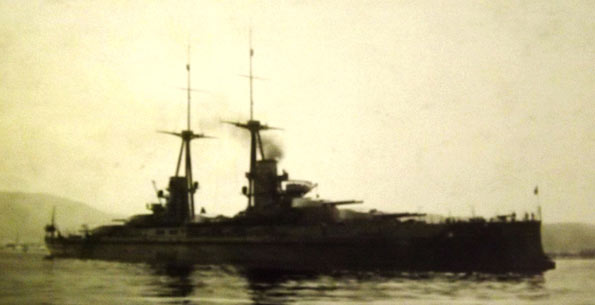
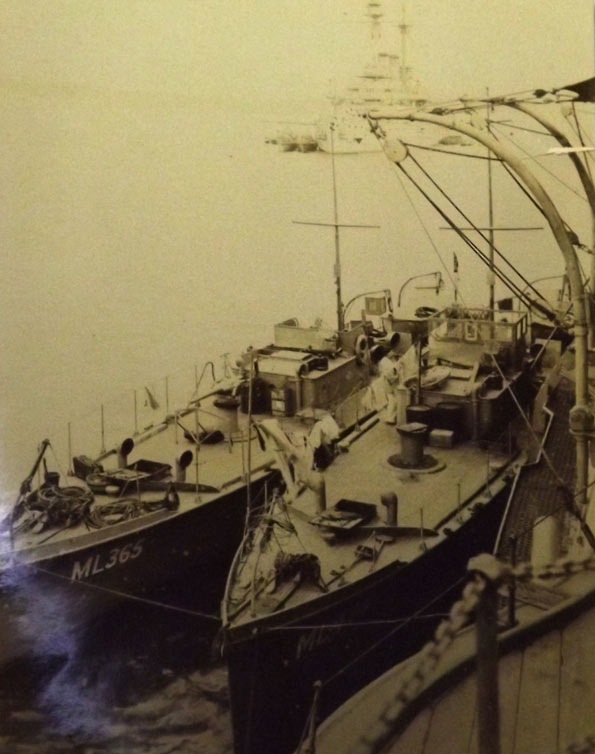
» Back to Top
5. From its origins of a small fishing village, Gosport developed into a Naval town with establishments such as HMS Dolphin. The Royal Marines Light Infantry was stationed at Forton Barracks, which is now St Vincent’s College. They were a squad of highly trained troops who formed landing parties or protected ships. They also were involved in communication on the battlefield via a bugle call or a drum.
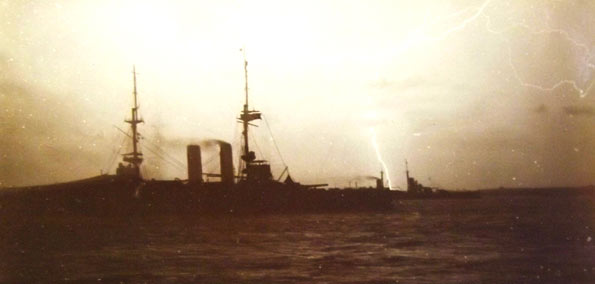
» Back to Top
6. This photograph is of Arthur Woods from Gosport, he is shown here proudly wearing his medals, including- The Campaign Star, The Victory Medal and The Imperial War medal. The 3 medals were commonly referred to as Pip, Squeak and Wilfred.Arthur served in the First World War in the Army which he joined at the age of 14. Later Arthur Woods married the widowed Alice Penfold (shown in No 7).
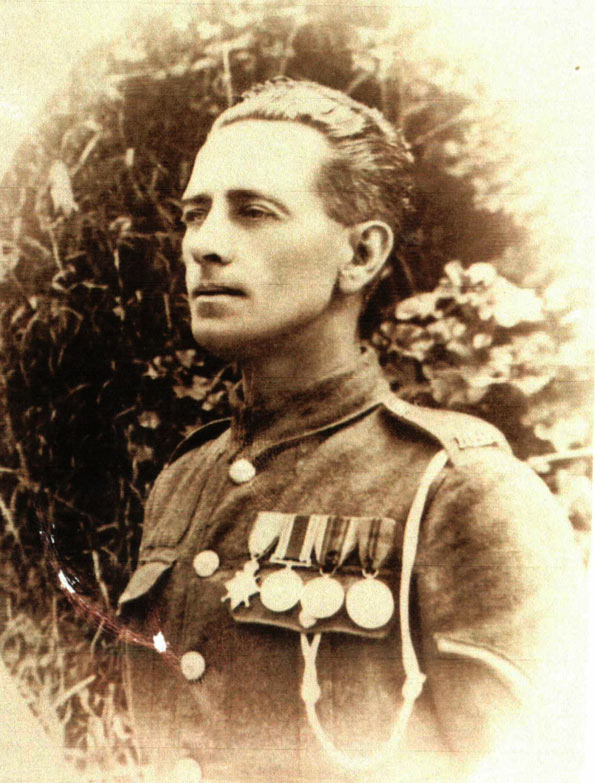
» Back to Top
7. Gosport sisters in service – Florence Penfold (Left) worked in The Royal Naval Air Service (RNAS) during the Great War. Her sister Alice Rebecca Penfold (Right) was a Dispatch Rider at Grange Airfield. Alice’s first husband was George Waterfield. He was in the Navy, but unfortunately he was one of the casualties of the ill-fated L24 submarine, which was sunk accidentally during an exercise 1924.
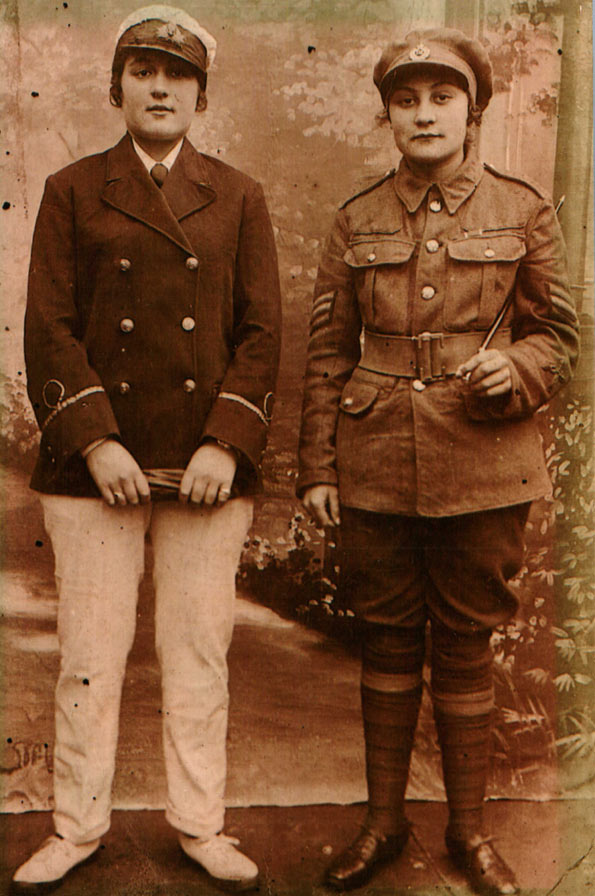
» Back to Top
8. Percy Alfred Rendle: Percy was a Gosport lad and joined the Dorchester Regiment in 1916. He served in Flanders and also fought in Arras and the Somme. In 1917 he was collecting water from a newly captured well when he was struck by a burst shell. He sadly died at the young age of 17.
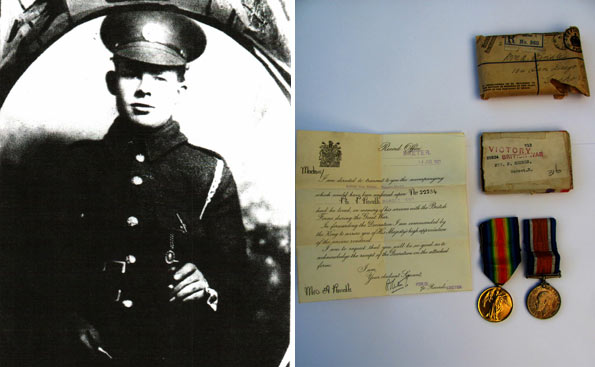
» Back to Top
9. Enlisting Poster: A diverse range of recruitment materials were produced to convince men to enlist, typically in written form or otherwise a captioned picture. This example is a list designed to make men feel obliged to ‘do their bit’. Many illustrated posters also applied this guilt tactic although often they incorporated it into a charming or comedic illustration. Men attending the local music halls would often be convinced to enlist on the spot, partly out of flattery, guilt and the desire to fight for their country.
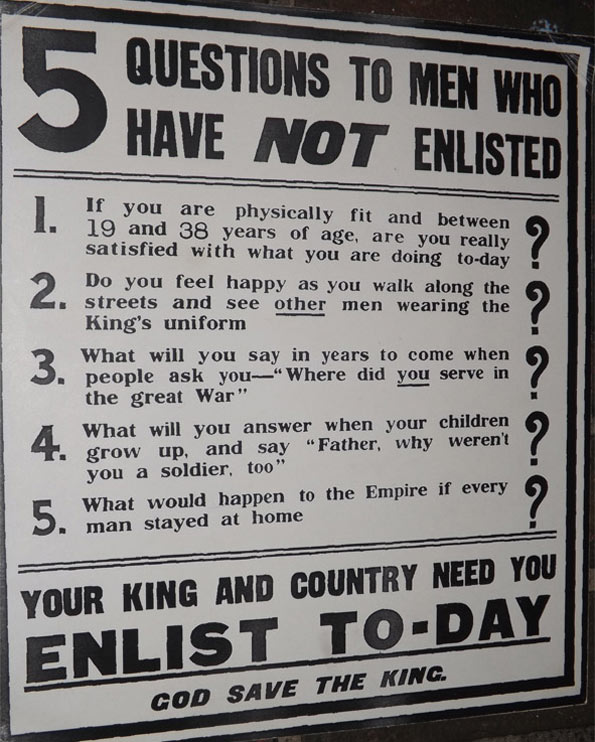
» Back to Top
10. Troops were trained at Browndown ranges with respect to digging trenches, boarding them up and putting in guard posts etc. This strategy was highly important as trenches formed a major part of their protection. Remnants of some of the trenches are still there today. A Gosport Veteran of a later war involving trenches described the terror of the enemy attacking across no man’s land as “Death coming closer, one step at a time”.
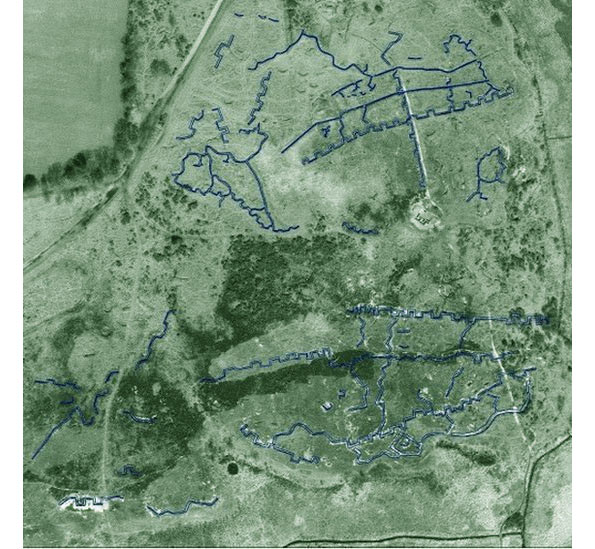
» Back to Top

